Meet one of the team behind our business software
Phil Hawkes is a Senior Software Consultant here at OGL and is one of the key masterminds behind our business software – prof.ITplus.
Phil joined our Company in 1983 and has had an instrumental role in  developing our software ever since. Of course, Phil’s work has been supported by many colleagues over the years, in particular Sue Bullock and Andrew Davies, two of our Senior Software Developers, who joined us in 1988 and 1990. Working alongside Phil, Sue and Andrew, there are currently around 15 developers working on prof.ITplus to continually enhance, improve and refine it, as well as develop whole new modules and features. We also have over 50 staff in other roles such as training, delivery and support. Together, they all strive to deliver excellent product and service to our customers.
developing our software ever since. Of course, Phil’s work has been supported by many colleagues over the years, in particular Sue Bullock and Andrew Davies, two of our Senior Software Developers, who joined us in 1988 and 1990. Working alongside Phil, Sue and Andrew, there are currently around 15 developers working on prof.ITplus to continually enhance, improve and refine it, as well as develop whole new modules and features. We also have over 50 staff in other roles such as training, delivery and support. Together, they all strive to deliver excellent product and service to our customers.
Phil is a big part of this overall team and continues to lead the development of prof.ITplus, 34 years after he first stepped over the OGL threshold.
Prior to 1983 what was your software / development experience? What led to you to OGL?
“Before joining OGL, I’d been an analyst/programmer for almost 10 years, working for large companies such as Cadbury Schweppes, Midland Bank, and Shell Chemicals. When I first started as a junior programmer, my ‘equipment’ consisted of a pencil, an eraser, and a pad of coding sheets on which the programs were laboriously written by hand. The coding sheets would be converted into punch cards so that the programs could run overnight on enormous mainframe computers.
“While I was working for Midland Bank, I was involved in developing some software to maintain the details of personal financial loans, which was to run on a new breed of ‘mini computers’. This was much more interesting, as the software was to be run and used by normal office staff – not professional computer operators. When OGL approached me, I’d been doing contract work for some time and I was keen to go back into full-time employment with a local company that looked like it might be going places; contracting work was well paid but involved a lot of travel and a certain amount of job insecurity. Added to the opportunity to write software that could be used by ‘ordinary’ people, deciding to take on the challenge of developing software for OGL was a bit of a no-brainer.”
How do you know what makes a good piece of software? What’s the thought process and planning behind it?
“Any software obviously has to provide the required level of basic functionality, but there are any number of different ways to implement that functionality. A good piece of software should be sympathetic to the needs and differing abilities of the people who are likely to use it. In the case of prof.ITplus, users will range in ability from super-users who are compiling and extracting complicated management information, to warehouse staff who only need to use the system to confirm receipt of supplier orders. In all of the programs, we try to make them as straight-forward to use as possible, whether the user’s preference is to use the mouse or the keyboard, and there should be a consistency in appearance and way of working so that any user can have a reasonable chance of successfully using a program, even when the program is not familiar to them. We obviously cannot anticipate every eventuality, but a huge amount of effort and time is spent on adding code to prevent a user from entering invalid data and to try to ensure that new data is consistent with data previously recorded. We also have to accept that there is no universal consensus in how software should work and what it should do – different businesses work in different ways and sometimes have diametrically opposed requirements. All we can do as developers is, where possible, provide the means for users to configure the system to work in the way they prefer.”
You must feel a lot of pride regarding your achievements? Currently there’s over 8,000 users of prof.ITplus across the UK. Did you foresee it becoming this big?
“Not at all. In the early 1980s, there was not much good, affordable, multi-user software around for small businesses, so I could see that, if I did a good job, there was an opportunity to develop something that could be successful. Looking back, the early versions of the software were fairly basic, and I can remember being told by someone looking at a prototype order entry program that ‘you have a long way to go’, but that just made me more determined to succeed. I’m proud that the software has played a significant part in the management of so many businesses and it’s quite humbling when I think about how many people are now using prof.ITplus every day.”
You must know prof.ITplus like the back of your hand – what is the fundamental aspect of the system that ensures it all ticks and works for ours customers?
“The facilities available in prof.ITplus have been developed over a period of more than 30 years, and are the culmination of all of the feedback we’ve had from its users, so we are confident that it satisfies all of the key requirements of our target audience. In addition, the whole system is underpinned by the Sculptor programming language and file structures, which provide unbeatable reliability and efficiency.”
What do you think sets prof.ITplus apart from competitors’ products? What does prof.ITplus excel at?
“The distinctive ‘look and feel’ of prof.ITplus is very much driven by the requirements of its users – defined simply as ‘maximum information with minimum effort’. Individual programs are designed to be straightforward to use, with as much relevant information as possible automatically visible on screen, and with additional information easily accessible if required. Where appropriate, colour highlights can be applied to easily identify exceptional or noteworthy situations. The comprehensive scope of the system ensures that no add-on products are required.”
There must have been strong contributions from others (historically and today) and teamwork must have been imperative to delivering prof.ITplus, and all its predecessors?
“The development of prof.ITplus has been very much a team effort, and OGL has been fortunate in that some of the main developers from the early days are still working on the system today. This ensures that there is a consistency in approach and that our users can be confident that any new developments will be done in a style that they are familiar with, and that they will work well with and will enhance what is already available. Sue Bullock deserves a special mention as one of the main developers since she joined OGL in 1988, as well as Andrew Davies who did a lot of work on the system in the early days.”
Which skills are most important as a software developer?
“My entire career in IT has been spent as an analyst/programmer so my skills are those required in that role – gathering, analysing, and documenting system requirements, designing file structures and screen layouts to be used in the programs, and coding and testing the programs themselves.”
What is your key strength would you say?
“Designing software that is reliable and, crucially, is straight-forward to use by people who are not necessarily familiar with business computer applications. I never dreamt in 1983 that I would still be working on the software all these years later, but I still love the challenge of the job, and look forward to being involved in the continuing development of prof.ITplus, to meet the ever-changing requirements of businesses.”
Discover OGL Software
A flexible set of tools, solutions, and functionality for modern commerce.







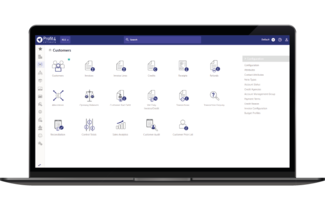
Contact Management
Manage your customer, supplier & prospect data and interactions in a single, fully integrated platform. The OGL Software CRM will help you to secure new business & build great customer relationships.
Find out more >>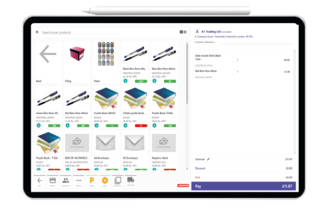
Multi-Channel Sales Order Management
Stay ahead of the competition with OGL Software multi-channel sales order management solution. Digitally transform your order management processes, from every sales channel for optimum efficiency.
Find out more >>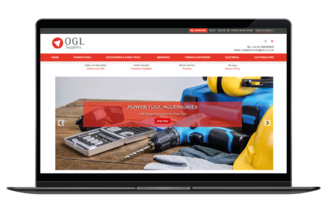
Integrated eCommerce
Easily implement a multi-channel selling strategy with Marketplace and eCommerce integration that will grow your customer base and increase sales without the extra admin.
Find out more >>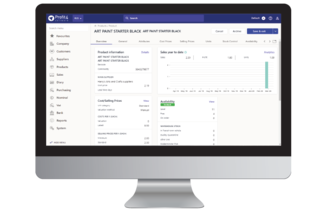
Stock Control & Management
Meet customer demands with stock control software that helps you to monitor, manage and optimise your stock levels so you can buy better and sell smarter.
Find out more >>
Warehouse Management
Maximise efficiencies with OGL Software WMS. Streamline your warehouse and stock processes to exceed customer expectations, improve reputation and increase profitability.
Find out more >>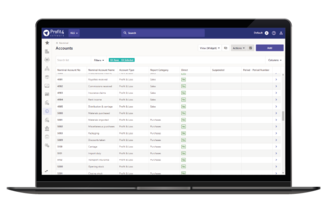
Finance & Accounting
OGL Software takes care of all your financial processes within one central system, making sure your data is always accurate. Have a 360 degree view of your finances to make smarter decisions to drive growth.
Find out more >>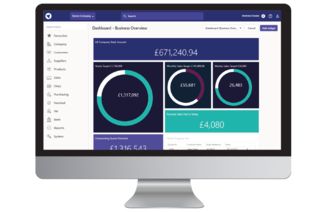
Reporting & Analytics
Monitor performance with real-time company and sales data so you can exceed targets and build a profitable future. OGL Software provides visual dashboards for personalised reporting and clear analytics.
Find out more >>Speak to our software experts
To find out how our Profit4 ERP software can transform your business, arrange a call-back with one of our ERP Consultants.